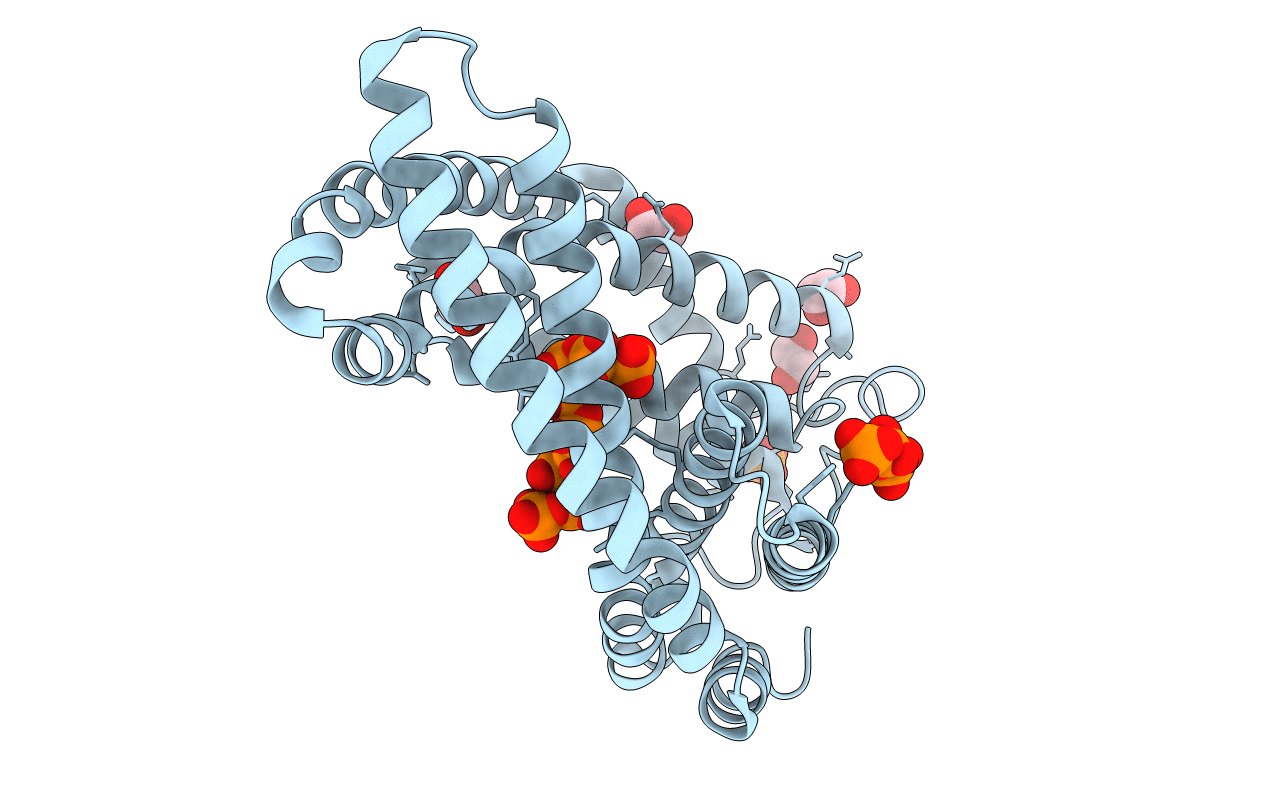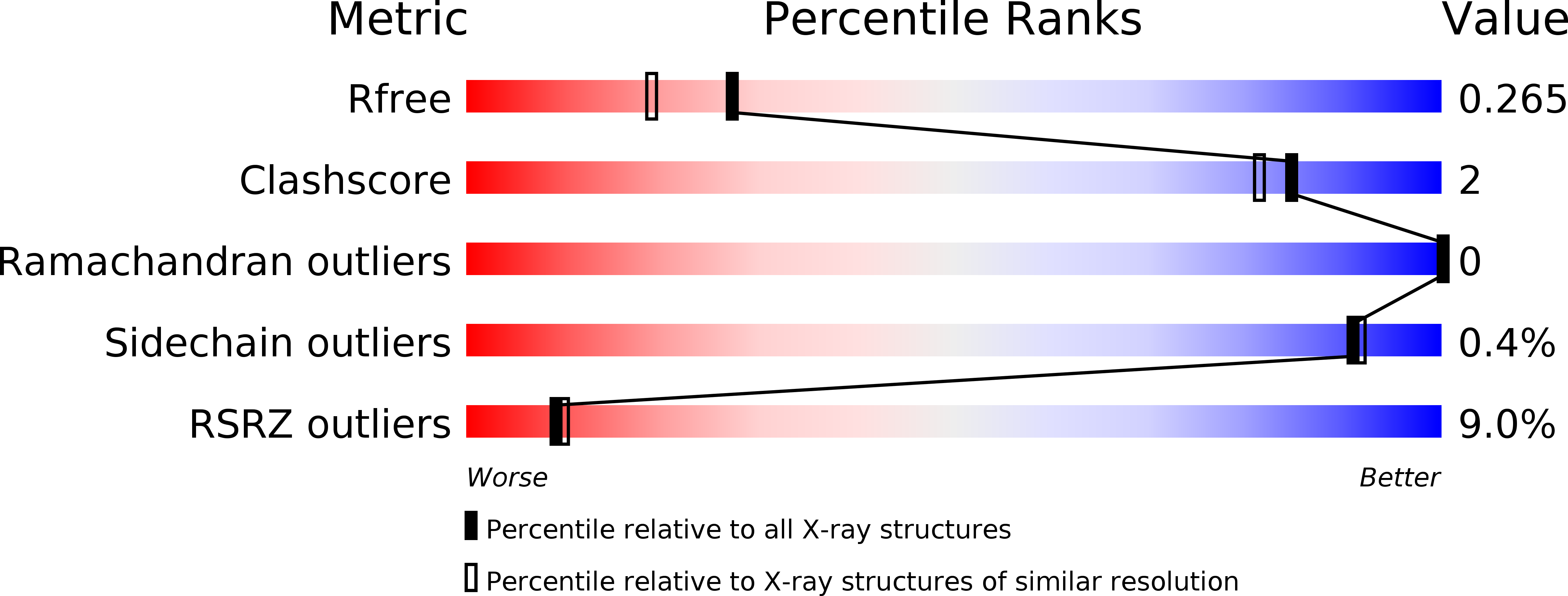
Deposition Date
2019-03-01
Release Date
2019-05-29
Last Version Date
2024-01-24
Entry Detail
PDB ID:
6QVA
Keywords:
Title:
Crystal structure of a CHAD domain from Chlorobium tepidum in complex with inorganic polyphosphate
Biological Source:
Source Organism:
Host Organism:
Method Details:
Experimental Method:
Resolution:
2.05 Å
R-Value Free:
0.25
R-Value Work:
0.20
R-Value Observed:
0.20
Space Group:
I 2 2 2


